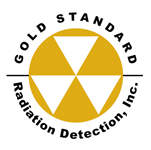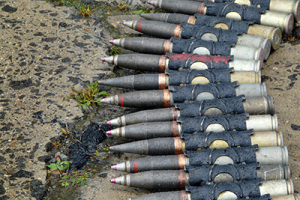Problems We Are Trying to Solve
The first problem we are working on is getting information to people. Everyday concerns – failures in our cell networks, utilities, police or fire departments overwhelmed can also earthquake, hurricanes, terrorist threats, active shooters, handheld EMP devices and more can affect our lives. We need information in any of these events and we need to be certain that information will be available in all circumstances. When in grade school we would do drills in anticipation of nuclear war – ‘bend over and kiss your bottom goodbye’ as response to the nuclear threat. It wasn’t adequate then and it isn’t now. Hopefully we will never need to experience this threat again.
But we can be better prepared for any of these and that is why we are working on what we call the eVader and the eVader network.
The next problem we are tackling is the transport of weapons of mass destruction and contraband. Specifically, to find and counter them quickly, safely and at relatively low cost by providing non-contact physical inspections of all shipping and baggage for shielded nuclear, chemical and explosive devices.
Problem #1 is getting information during a disaster.
If you have been involved in a disaster or life-threatening information you know that having information about what is happening or has happened is key to surviving or enabling a best outcome.
A good deal of effort goes into preparing ourselves, families, and communities. We do this, assuming that we know what happened. Consider the explosion in Beirut, there was a mushroom cloud, was it nuclear? A gasoline tanker? Certainly, responders would behave differently if they knew it was nuclear or high explosive, Bhopal? A power outage? A gas tanker explosion in a tunnel?
Consider that the power may be out, your cell phone may not work, and the internet may not be working. This is the premise for our eVader technology from our first handheld device showing the survivability features and a development plan to transition key technologies to mesh network providing real-time information when other communication systems are not operating. Think about it – if you want information, you should base that information on a network which has been hardened to almost any threat. It must be there when you need it. Hardening a network, making sure that you have the information you need when you need it, is our goal.
We are working on devices which are hardened to nuclear and EMP events; ultimately to put the technology on a hardened network so that we know the information we need will be available when we need it. The network will also be there for other types of events ensuring we have what we need when we need it.
For most of a century nuclear threats have been considered the most likely threat to wipe out our civilization, in addition, millions of people face the possibility of radiation exposure and damage every year. This damage can occur suddenly from nuclear accidents, medical equipment theft, terrorism, or war. These problems can be mitigated with the technologies that Gold Standard Radiation Detection is developing.
A key feature of the nuclear events is that none of the commercially available real-time detectors on the market are capable of working through a nuclear event with a prompt radiation pulse. A prompt pulse is what a bomb does or when the roof of a reactor comes off. The radiation is highest right at the start and fails rapidly at first.
All other commercial radiation sensors quote an average dose rate at which they will work. This is typically 500 Rem/hour; which is approximately the lethal dose 50/30 (50% of people will die in 30 days). Usually, the quoted rate limit is over an hour time frame at an average dose rate one might survive – in an hour. However, the dose rate is high at first and then can fall rapidly.
That average hour will not reflect the damage to your tissue. Using an instrument like that you could be missing the most critical information which might save your life by using one of these devices. In a book by Glasstone,’; Effects of Nuclear weapons’, he makes the point on page 577, he says ‘Such injuries as were caused by nuclear radiation were due to initial radiation’. What this means is that the prompt radiation caused most of the radiation induced deaths – not the fallout. Until now, there was nothing that could be done about this.
Another important point is that it is not clear that radiation damage would be the cause of most casualties. However, if you are unfortunate enough to be in the wrong place at the wrong time, there is an excellent chance the information eVader I can provide will save your live and reduce long-term effects. The technology should continue to function under other extremes helping to keep you safe then as well.
We highlight and try harder to explain the reasons in the education section. The bottom line is that most sensors will fail and if they don’t then the electronics may fail. It is the reason we don’t own Geiger counters or other radiation sensors – because if we really need them, they will fail, take too long to give information or they will provide wrong information leading us to make bad decisions. Our sensors fix those issues.
Our second evolution of the eVader product will help address the communication problem in event of any large disaster. We are working to make the aspects of this capability available through a subscription service and a mesh network. We are bending our efforts towards a ‘self-aggregating’ radiation- and EMP- hardening communications network. The network we envision, and we believe that we can build, would be operational after an explosion, such as that in Beirut – non-nuclear, during a power outage (such as the one in the Northeast US in 1965) and outside the direct blast zone of a nuclear explosion. In such situations first responders, military personnel and police are overwhelmed. Our hero’s want to help but may be overwhelmed and we need to have information to help ourselves and help them do the best they can. Everyone could have access to a real-time map of key hazards. We are actively pursuing ways to fund this effort.
What has happened and what to do? Are the first questions one asks in a disaster; we intend to provide that information.
The issue of EMP threats is growing larger every day. Please do a search on EMP weapons, and handheld do-it-yourself EMP devices. What you will find is that there are many videos, some have over 1 million hits. These EMP devices are becoming ever more abundant and, in an era, where we are highly dependent upon electronics it is important to have a hardened means of communication.
Problem 2 – Finding Weapons of Mass Destruction (Special Nuclear Material, Chemical or explosive)
Current smuggling of nuclear and chemical weapons, as well as multiple kinds of contraband by travelers and in shipping is a huge concern. The principals at GSTND have been involved in proving a technology[i] that we believe is capable of safely, inexpensively, and without slowing commerce capable of finding most kinds of weapons of mass destruction. It is even capable of doing this in a portable system. We are now at the point where we are looking for private funding to enable this in a commercial fashion.
The world needs a safe technology that at nominal 1-meter distances can test each piece of luggage entering the country without slowing commerce or the flow of people. The system should be compact and have adequate sensitivity sufficient for small quantities of Special Nuclear Materials (SNM) materials. This means quantities much less than the International Atomic Energy Agency (IAEA) significant quantity. The technology should also work in situations where the targeted luggage is hermetically sealed and washed so that there are no external materials that act as markers. (in other words: forget swipes they may not work when most needed)
Uranium is much less radioactive than Plutonium. Because of this there are no useful, fast, safe and sensitive ways of finding Uranium. This means that SNM can be shielded, or concealed, such that it does not emit a strong enough gamma or neutron signal for passive radiation systems to work effectively.
Active interrogation methods have been used to overcome the weaknesses of passive systems. However, the currently available active systems pose several logistics problems. Many configurations use neutron generators that are too large, too powerful, too expensive, too slow and/or create too much exposure for the personnel operating them to be practical for rapid, portable detection capability.
It will be more valuable to the US and the world if the system could also be adjusted to also sense other types of contraband (such as chemicals, illicit drugs, or explosives). We believe this is possible with the technology we wish to pursue as well as the capabilities we have already shown.
GSTND is working to build a system with the potential to operate for many months continuously with minimal maintenance. The system will be safe at a minimal standoff distance, must not contain high dose rate stationary radiation sources, and uses minimal power in a compact system. It will be able to detect shielded depleted Uranium, enriched Uranium, Plutonium, and other fissionable materials nearly instantaneously. We believe we can build these using adaptations of technologies already proven at short range and with development we make the same measurements on every transportation being loaded or unloaded without causing delays. False positive rates will be exceptionally low as will false negatives.
We believe that simple adaptions of what we have already shown can allow all baggage and shipping to be tested without causing delays and at minimal cost per test.
[1] Mark Derzon, Aaron Powledge, Paul Galambos, et al, Short Pulse Interrogation with Neutrons (SPIN) Method for Special Nuclear Material Detection, PRESENTED AT THE INMM, CONFERENCE, 2019, SAND Report2019-7553C, Presented at INMM 60th Annual Meeting held July 14 – June 18, 2019 in Palm Desert, California.




